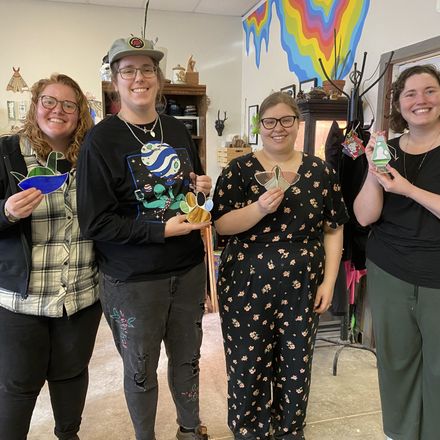The Longest Yard
Published August 2023
By Carol Mowdy Bond | Photos by Lori Duckworth | 18 min read
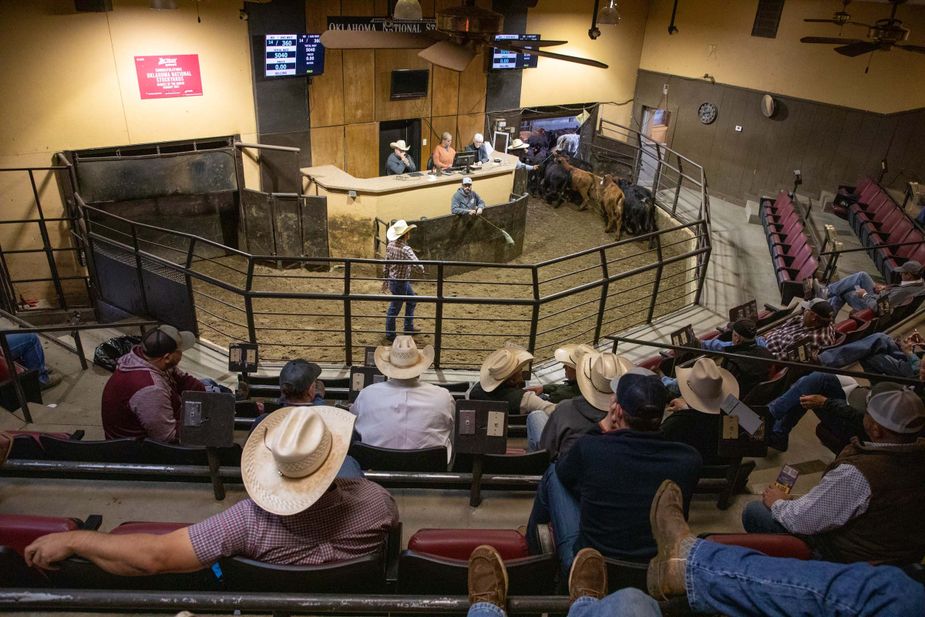
The Oklahoma National Stockyards in Oklahoma City hosts live cattle auctions on Monday and Tuesday mornings. Photo by Lori Duckworth
The catwalk sways in the wind as visitors mosey across its more than 937-foot reach about two stories off the ground, the vantage giving them a bird’s-eye view of cowboys on foot and horseback moving among hundreds of cattle in pens. Horses nicker, the beeves snort and moo, the cowhands call to each other. Dust catches the sunlight. The cowpunchers push livestock into the arena. Inside, a voice calls out in a rapid-fire staccato. It’s auction day, and the bidding crowd is arrayed in blue jeans, boots, and pearl-snap shirts—a ranchers’ uniform going back generations.
But in this odd enclave just a couple miles downriver from downtown Oklahoma City, perhaps time is standing still. For more than a century, its businesses and faces have changed and weathered, but the neighborhood’s integrity, its rugged, rough-around-the-edges Western charm, has remained intact. This is Stockyards City.
A village somewhat unto itself surrounded by urban sprawl, Stockyards City revolves around its own economic engine—the Oklahoma National Stockyards, known ’round these parts as simply the Yards. Here, forty-two acres of cattle pens stand among a labyrinth of passageways paved with the original bricks that first comprised the place. Still the world’s largest stocker and feeder market, the Yards holds auctions every Monday and Tuesday in its open-to-the-public arena.
Since 1910, more than a hundred million head of livestock have passed through these gates, fueling a major economic force in Oklahoma since before statehood. Originally known as Packingtown due to its high number of meat-packing plants, the area now officially is called the Stockyards City Historic District and appears on the National Register of Historic Places. Located spitting distance from Interstates 40 and 44, it’s a destination unto itself, drawing hundreds of thousands of visitors annually from all over the world.
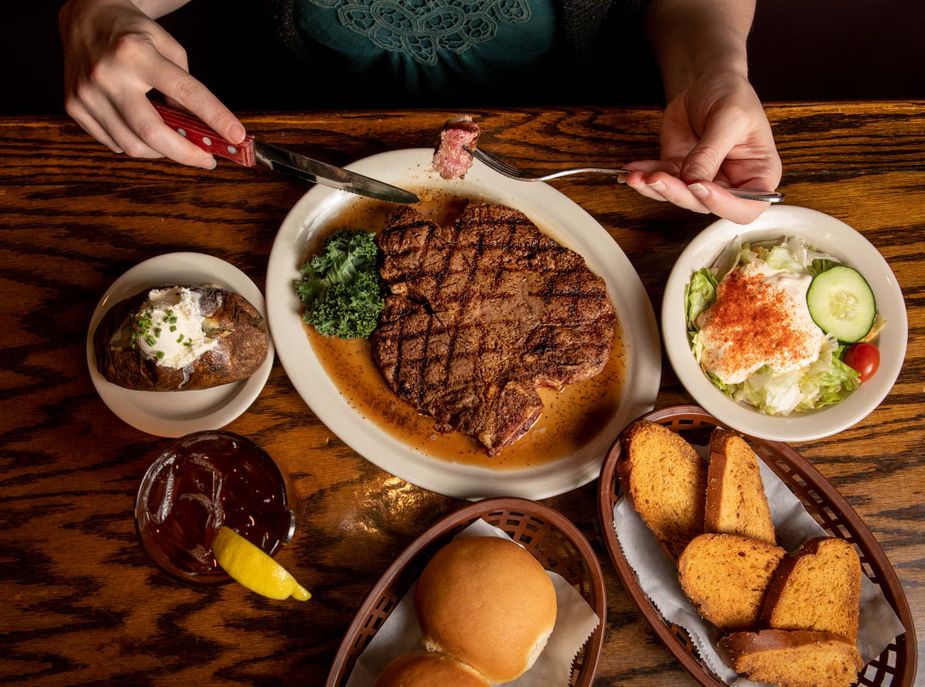
Cattlemen’s Steakhouse has been a local institution since it opened in 1910. Photo by Lori Duckworth
Though the tourist-to-cowboy ratio has changed over the years, this has always been a high-traffic area. The Yards’ origins reach back to Oklahoma City’s formative years, when the city created a public livestock market in 1910 in tandem with the nearby opening of several major meat processing and packing plants. A jumbled junction of a half-dozen railroads and a large livestock market spurred this master plan the same year the State Capitol moved from Guthrie to Oklahoma City.
Some stockmen moved their herds in by railroads, but for years, cowboys spurred their horses through swirling dust, driving sauntering cattle toward the livestock pens. At the time, Oklahoma City’s population stood at around 60,000, and the Yards and packing plants became the city’s first major industry, giving rise to 2,400 new jobs and remaining the area’s largest employer for years. Some housing sprung up nearby; other workers commuted via the city’s early streetcar system. With so many coming from far and near, a commercial district grew up with products and services to accommodate the constant stream of people.
But with increased human habitation came increased chances for misbehaving. From the outset, the Yards were a rambunctious place, the old rough-and-tumble lifestyle of the fading Wild West still very much alive here. Slaughterhouse employees and cowboys endured grueling work that wasn’t for the squeamish, and after long trips bringing cattle to market, everyone was tired and ready to blow off some steam. Of the innumerable two-story hotels, many were legitimate, with honorable customers and well-behaved patrons. Others rented rooms by the hour and were known as places to access disreputable services.
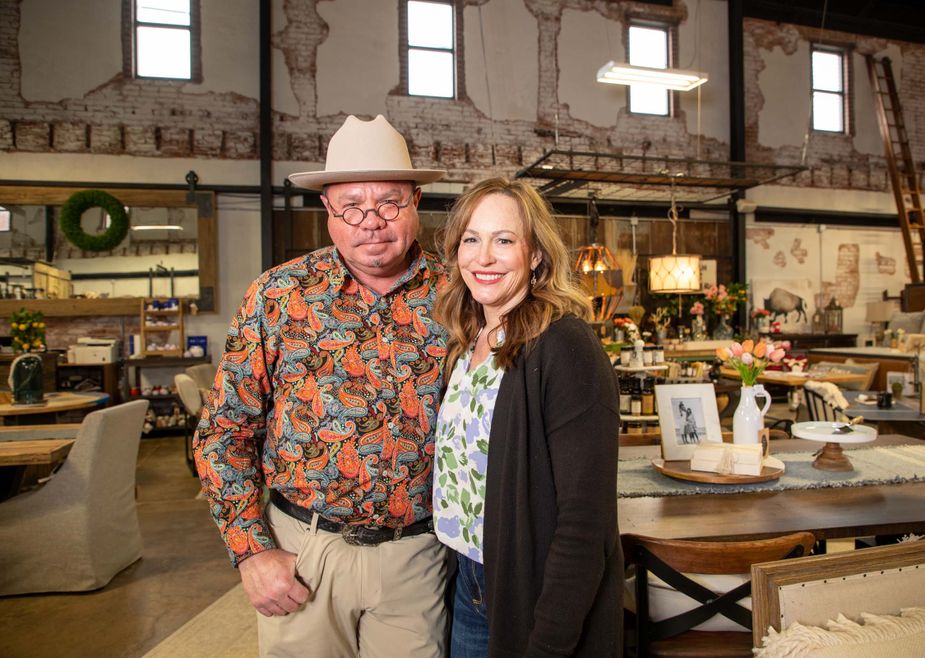
Todd and Michelle Miller own Grain & Grange furniture and design store, which sells a variety of one-of-a-kind pieces made from reclaimed wood and other materials. Photo by Lori Duckworth
But no matter their reputations, these buildings soon became landmarks.
Many of those landmarks remain more than a century later, some of Stockyards City’s buildings and businesses among the state’s most iconic sights and experiences. Here, for example, visitors find Oklahoma’s oldest continually operating restaurant, the famous Cattlemen’s Steakhouse, founded in 1910, the same year as the district. If by chance the neon sign out front doesn’t provide enough of a guiding star, visitors simply can follow the aroma of grilling steaks Cattlemen’s emits throughout the neighborhood.
Here, diners pack into vintage red booths to enjoy a famous menu of lamb fries, choice-grade steaks grilled to perfection, salads with that famous garlicky house dressing, and coconut cream pie with mile-high meringue.
But the place is as much a museum and living history venue as a gastronomic delight. Visitors gravitate here to see a slice of the West where people still live and work every day in cowboy hats, boots, and great big belt buckles.
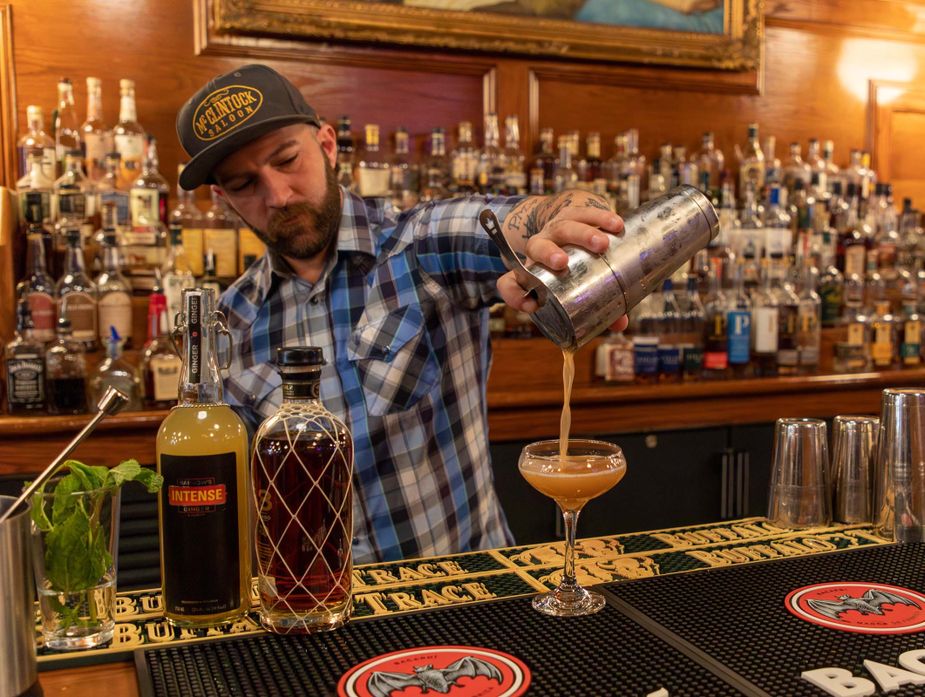
Bar manager Matt Ramesh works on a new cocktail at McClintock Saloon & Chop House. Photo by Lori Duckworth
“On any given day, it’s like running a restaurant in a museum,” says David Egan, the steakhouse’s director of operations. “Our walls are covered with tons of old photos and memorabilia that hark back to the day. People come here to see what the West was like.”
Also founded with the neighborhood’s beginning, Exchange Pharmacy is the city’s oldest continually operated drugstore. Though the classic soda fountain is gone, the walls are peppered with historic mementos, and the window still reads “Soda Pop and Water 75¢.” Eric Coker’s parents bought the business in 1951, and he remembers what weekends were like in the district.
“On Friday nights, there were family-friendly events at the Yards,” he says. “Our soda fountain served hamburgers. The lines of people waiting to order spilled out the door. There was a bar down the street, and the owner had a bear in a cage and a chimpanzee for entertainment.”
_1.jpg)
Savvy shoppers know to visit Little Joe’s Boots for a pair of authentic cowboy boots. Photo by Lori Duckworth
There aren’t any primates at Stockyards Sarsaparilla, but the sense of history manages to come through just fine anyway. Here, visitors can belly up to an eighteen-foot 1895 bar for a sip from more than two hundred varieties of ice-cold soda, forty kinds of root beer, and the famous Stockyards Sarsaparilla. All that glugging needs some solid bites, and Stockyards Sarsaparilla delivers with a smorgasbord of nostalgic candies and more than thirty-five varieties of handmade fudge. Assistant Manager Patty Buchholz says the Orange Cream fudge tastes like a Dreamsicle and pairs perfectly with an Orange Crush or Virgil’s Vanilla Cream Soda.
“It’s a lot of fun here,” she says. “I get to talk to people from all over the place—we get a lot of visitors, and tour buses come in. Just this week, we had visitors from Brazil, Italy, South Africa, various U.S. states, and places around the world. One time, the ambassador from Bangladesh came in.”
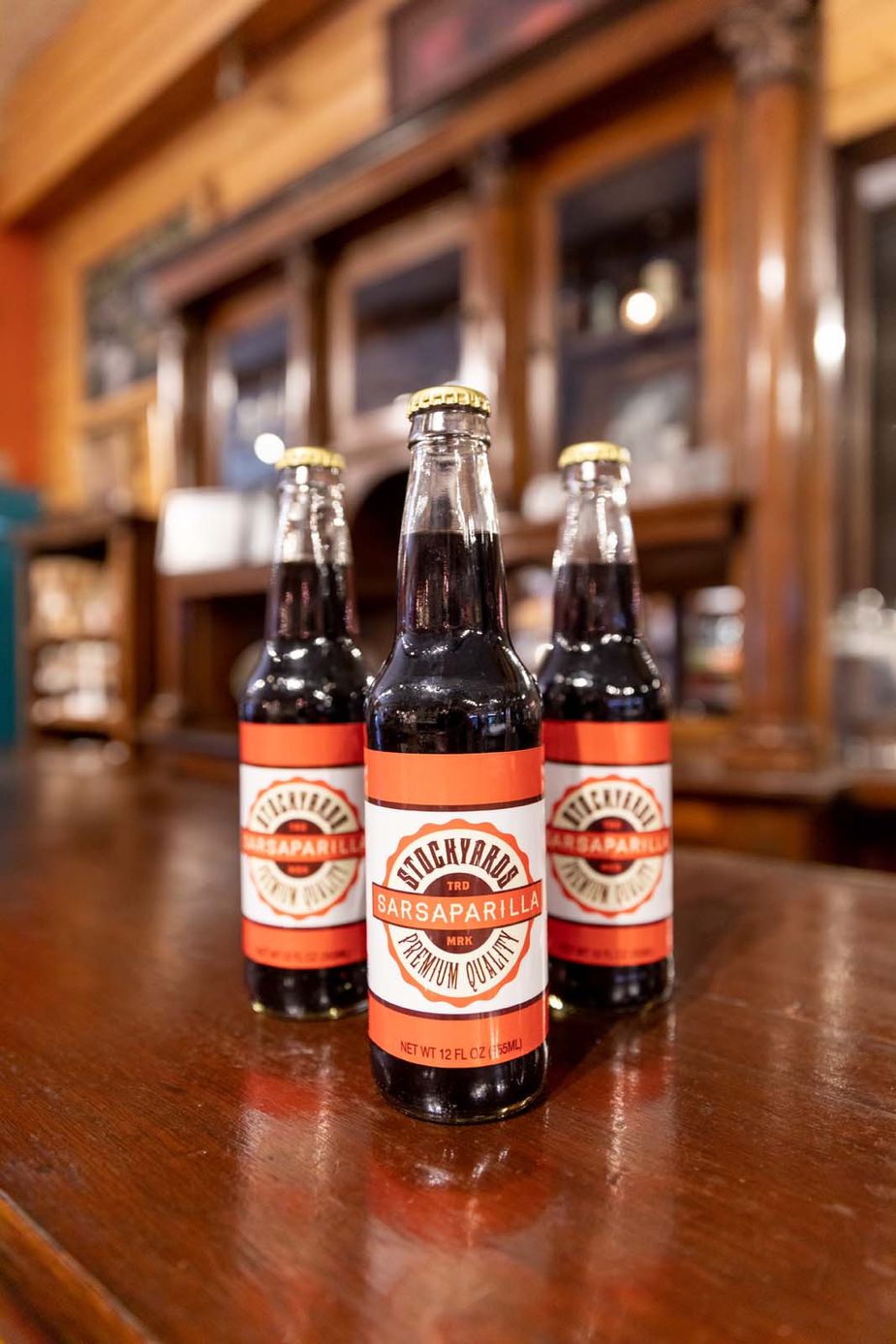
Old-fashioned sodas and candy are plentiful at Stockyards Sarsaparilla. Photo by Lori Duckworth
Stockyards City’s colorful present comes from a colorful history, one that aligns with America’s. Its location caused U.S. highways to pop up nearby. And during the Prohibition era, the district offered everything a prosperous bootlegging operation might need.
Take, for example, P.C. and W.A. Camp, who owned Capitol City Barrel Company on Agnew Avenue. These enterprising gentlemen would leave the keys in a truck loaded with wooden barrels at a certain location. When they returned, they always found the truck empty and money on the seat. Their operation was so well known that, once when the authorities were on the brothers’ tail, they were warned off by a local preacher and the sheriff.
During Prohibition, Hank Frey owned Cattlemen’s, and he and his wife lived upstairs from the restaurant with another couple—the four were bootleggers and gamblers. Savvy visitors knew they could buy “liquid delights” by going inside Cattlemen’s and heading discreetly up the stairs. For more than a decade after the end of Prohibition, Hank continued to run the restaurant—until he lost it in a game of craps in 1945.
Shenanigans aside, by the 1930s, cars, pickups, and big trucks idled and snaked through the streets as the livestock industry modernized. By 1961, the operation had grown big enough that it transitioned into a cattle auction. By the 1980s, it had become the largest cattle market in the nation and, in 1996, the largest in the world, feeding not only the state’s essential ranching industry but a wide range of adjacent businesses run by some nigh-unforgettable characters.
One of the area’s must-meet proprietors is Lavonna “Shorty” Koger, who owns the world-famous Shorty’s Caboy Hattery, where everyone from workaday cowpokes and rodeoers to stars of Western films and TV shows like Yellowstone have found cowboy crowns to adorn their heads.
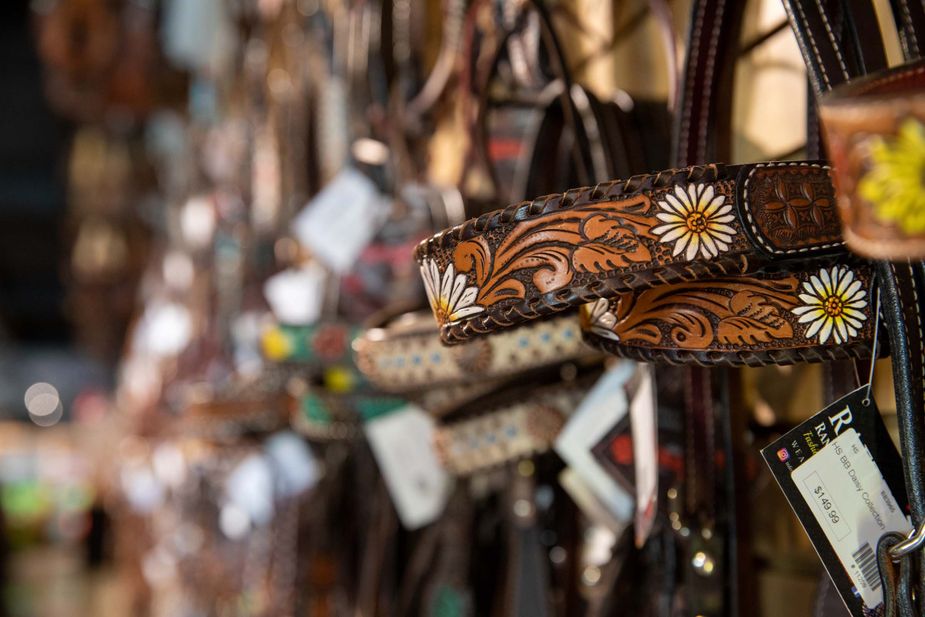
The National Saddlery sells a variety of gear for riding, roping, and living the Western life. Photo by Lori Duckworth
“Anybody who wears a Shorty’s is famous,” Koger is known to say with a wry smile.
Koger is a 2021 National Cowgirl Hall of Fame inductee, and she creates her hats from beaver and other furs, hanging them neatly across a log cabin-style wall in her rustic showroom. As a steamer pools water onto the concrete floor, one of Koger’s employees uses it to custom-shape a hat under a cowboy customer’s watchful eyes.
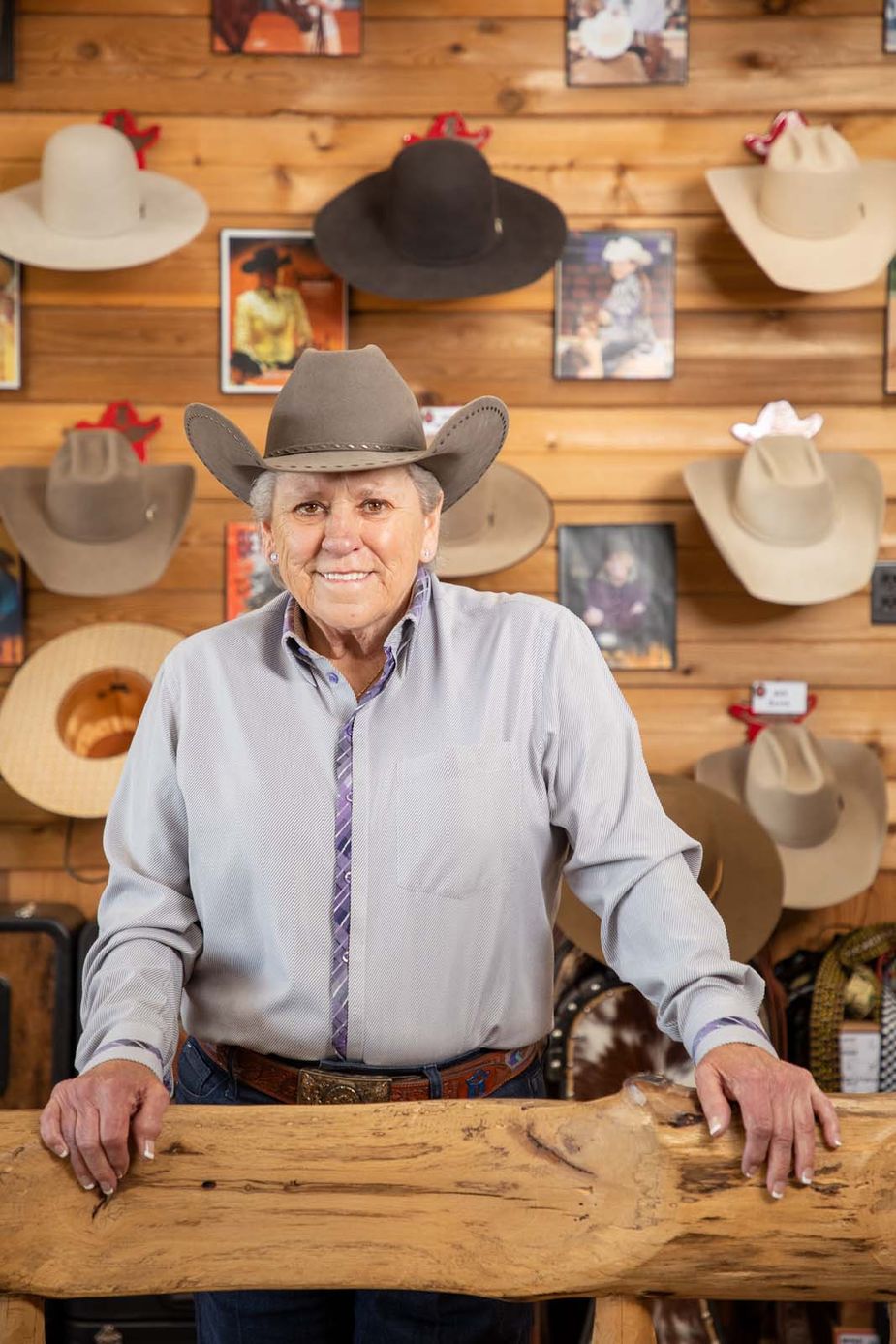
A former rodeo contestant, Lavonna “Shorty” Koger has owned Shorty’s Caboy Hattery since 1990. Photo by Lori Duckworth
Pair Koger’s grit and independent spirit with a modern, minimalist twist, and you get Michelle and Todd Miller. They own the Grain & Grange furniture and design firm inside a former feed and seed building that later became a meat market and café where, back in the day, boarders got a heckuva surprise when they didn’t pay their rent and found the manager had thrown their belongings out the windows.
No defenestrations—of objects or people—occur here today. The Millers work on the building’s second floor, where the old brick walls and upstairs windows allow their creations to bask in natural light, their unique design projects combining repurposed metal and wood for one-of-a-kind furniture with a Wild-West-meets-industrial-chic flair.
“The building had been completely gutted, and new infrastructure, including a new roof system, were installed,” says Michelle. “When we moved in, it was just the shell. We finished renovating, put in an office, storage, and restrooms, and then we decorated.”
Modern takes on the Wild West are everywhere in Stockyards City. At McClintock Saloon & Chop House—named for the famous 1963 John Wayne film McLintock!—a period-style painting of a scantily clad woman hangs behind the fifty-foot bar where patrons sip more than 180 varieties of whiskey. From here, diners pass through a red-velvet curtain into the dining room, where ornate chandeliers shower guests with opulence. The menu is a collection of upscale old favorites like Grandma’s Meatloaf and fried chicken with white gravy. But since they’re in cattle country, most diners order from the extensive menu of steaks. Next door in a space once shared with the Oklahoma Opry, Rodeo Cinema offers a rotating lineup of classic and independent films, adding a bit of high-culture flair to the area.
But visitors, especially those from out of town or out of state, come to experience the West—many in a shopping kind of way. After all, buckaroos—whether they’re roping steers or wrasslin’ spreadsheets—need gear, so Stockyards City long has been a suiting-up hot spot.
Founded in 1926, National Saddlery’s tack shop is the area’s largest stocker of rodeo gear, carrying a full line of bull riding and roughstock equipment any rodeoer—or anyone who wants to go to a rodeo and not look like a city slicker—could ever need. Not far away is the headquarters of the International Professional Rodeo Association.
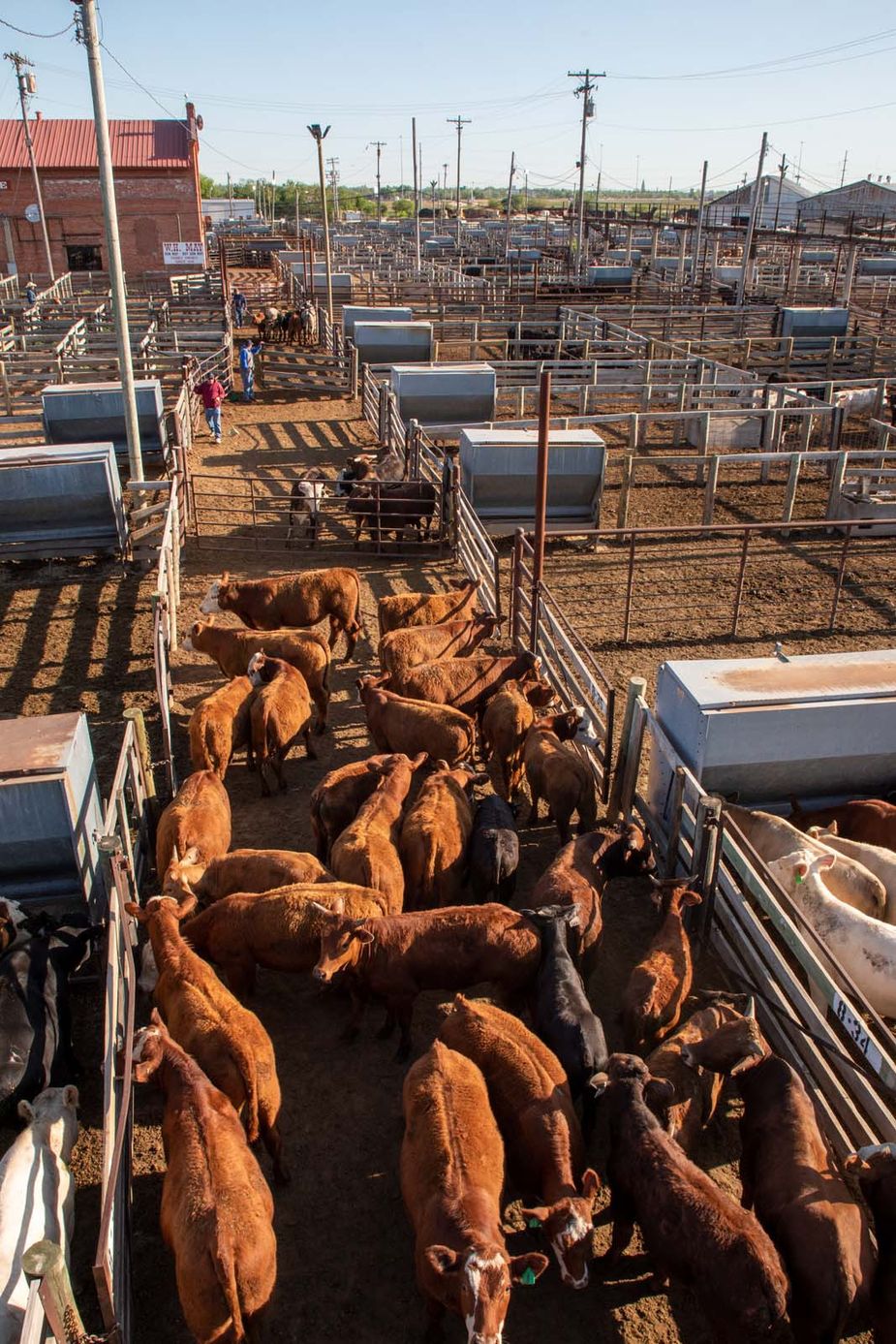
Founded in 1910, the Oklahoma City National Stockyards is the largest stocker and feeder cattle market in the world. More than a hundred million cattle have passed through over the course of its history. Photo by Lori Duckworth
For those looking for a Western-inspired style change, there’s no shortage of shopping here. In addition to Shorty’s, National Saddlery, and the famous Langston’s, travelers can stop in at Little Joe’s Boots, which is stuffed with cowboy and cowgirl duds and gifts—and features a long church pew where shoppers can sit to try on their boots. In fact, there are so many shops here that no matter what flavor they’re seeking, those engaging in a bit of retail therapy will be sure to find something perfect.
Stockyards City is the rare destination district that has no story of decline. Unlike some urban enclaves that were created from the detritus of falling-down or burnt-out warehouses and old storefronts, Stockyards City always has been vibrant, active, filled with people—after all, cattle ranching’s importance to Oklahoma’s culture and economy has only grown every year since statehood, and in this district, it finds its cultural and financial locus. And though now, classic cowboy fashion and iconic Oklahoma foods sidle up to upscale shops, independent films, and high-end restaurants, the area’s flavor remains unchanged. In that way, it’s a microcosm of Oklahoma. Like cowboys themselves, Stockyards City remains true, honest, and essentially itself.

.jpeg)
.jpg)
